29:03.39S 30:44.90E 16th-18th April, 2010 To our friends Nick and Helen Bryants, Oakford Lodge, Greytown, Kwa Zulu Natal 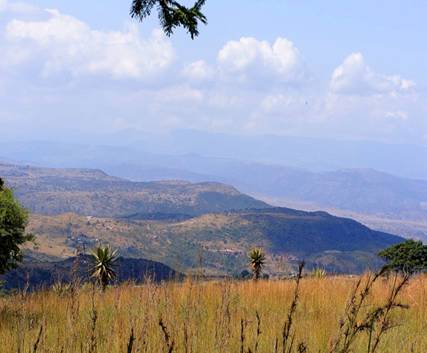
This is the African Veldt of Eastern Africa we enjoyed driving through on our way South to Greytown, to visit our friends, Nick and Helen Bryant, whom we’ve not seen since we said our farewells to them 10 years ago, after they sold their boat, FORCE 8 in New Zealand. We had been sailing at more or less the same period from Tahiti to New Zealand in 2011, and we were the ones who told them about 9/11 over the SSB radio. We’ve been wanting to visit Africa ever since, and have finally had the opportunity to do so, and we are still in touch with them, so that’s just perfect. 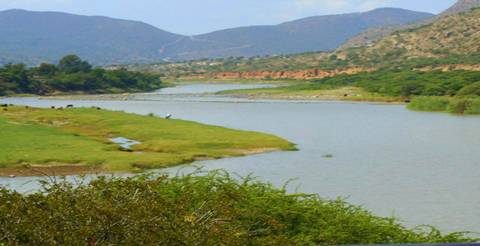
Tugela Ferry, taken from the bridge, but it used to be an important crossing for the wagons and bullocks as they made their way inland and North into Natal in the 1800’s. 
Kwa Zulu properties are scattered over wide areas, each with their rondavell hut in which their family’s ancestral spirits are kept, or they might be used for cooking. A piece of land is usuallly large enough to keep some chickens, and grow some maize. Most have electricity which they get at a subsidised rate from the government. 
Typical attire of the Kwa Zulu women as they walk about town, with a cloak and their head covered in a fabric wrap. 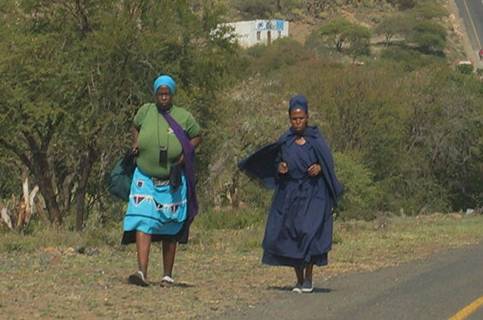
This is also a very typical appearance of the Kwa Zulu ladies Yes, they are mostly all larger than the slim look we are used to! 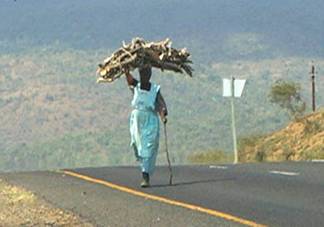
Despite the hard work, fetching, cutting and carrying wood for cooking and keeping warm, The woman still manage to be large size! 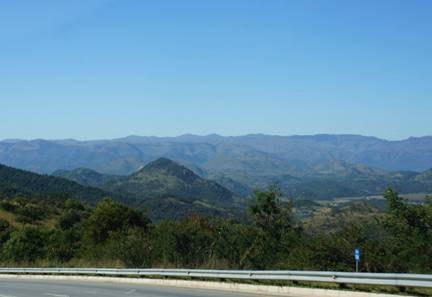
The countryside gradually gets greener as we go through lush areas of forest 
This saw mill exports the Wattle and Eucalyptus chips and planks of wood to Japan mostly. It belongs to a friend of Nick and Helen’s, we met at Oakford as they were invited to dinner the night we were there. 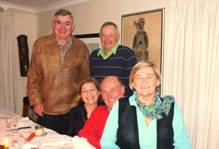
Left is Martin, the owner of the sawmill, Madeleine his wife, Nick is standing above David and Helen is in the foreground. 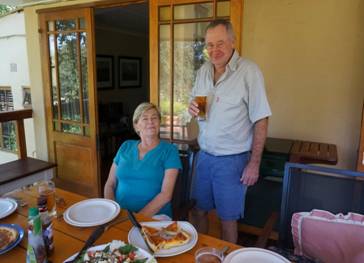
Nick and Helen, on the deck outside their farm house which is called Oakford 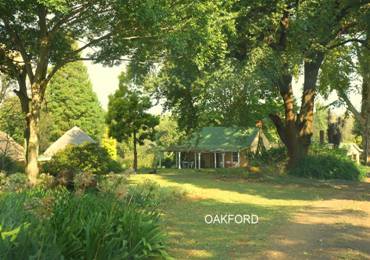
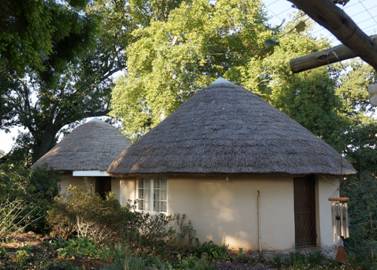
The delightful thatched rondavels built in true Kwa Zulu fashion in which Helen and Nick use for their guests, the two are linked together beautifully by the bathroom 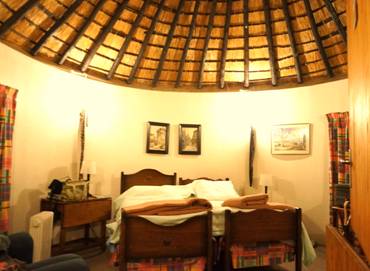
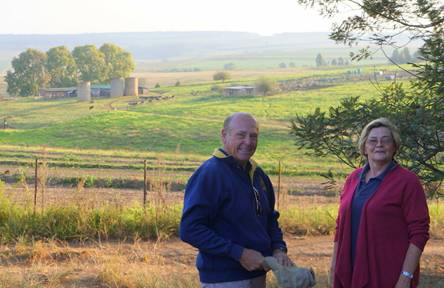
Helen took us for a loop walk around the estate. They keep some of the young calves in the sheds very close to the house, with the mothers grazing in the field, all of which you can see in the background of this photo. Their daughter, Sue and son in law Graham went into partnership with a cousin to set up a state of the art dairy herd and milking system just a few miles further away, where they currently have 700 cows, of various breeds, and should have 1,000 within the next 3 years. It was a most impressive set-up, but I will not bore you with all those details here. 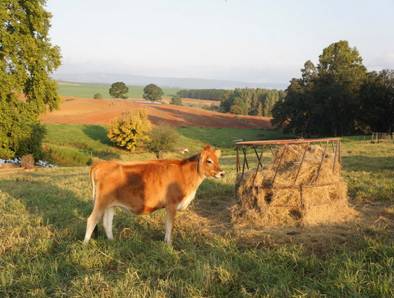
A beautiful Jersey cow – oak trees, green grass, surely this is not Africa? Nick and Helen’s house, OAKFORD, was settled in 1850 by a young teenage girl called Sarh Jane Bryant. (The same surname as Nick and Helen Bryant, who now live there). She was just 18 years old. She travelled here from the Port of St John’s with 10 Zulu deck hands. They wanted to get back to their home land, and discovered that this young lady, called Sarah Bryant, also wanted to make her way in the same direction. She sailed here by ship from Oakford in Devon, England. Hence the name of the farmstead. She had lost her father just months beforehand, so she was an orphan, as her Mother had died before they left England. What a tremoundous journey that must have been, an 18 year old girl, accompanied by Zulus, crossing unknown territory, rough and difficult. A distance of at least 600 miles as the crow flies, so twice that distance with the mountains and river crossings that needed to be negotiated. It would have been a long and arduous adventure, as travel was slow, only managing something in the region of 10 miles a day. It would be worth making a film of her story ! | 
